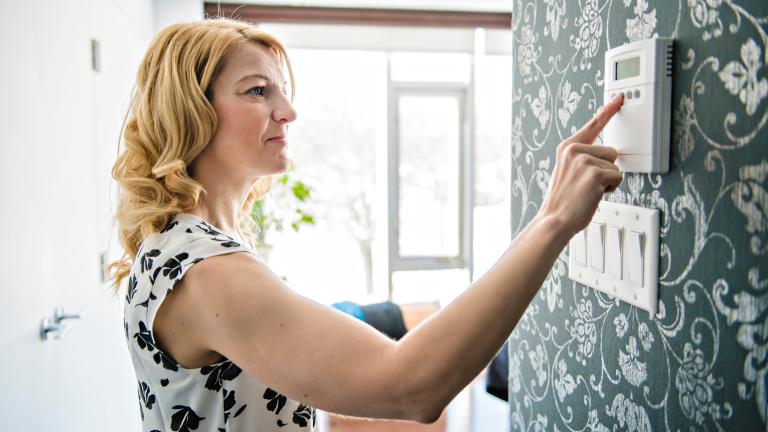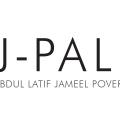
This is the third and final blog in our series on energy access. Read the first blog post on how electricity billing systems may impact energy access, and the second blog post on emerging evidence and policy lessons for balancing industrial growth, energy use, and climate change.
The impacts of Covid-19, coupled with the war in Ukraine, have made households in Europe more susceptible to energy poverty, particularly as people are bracing themselves for the cold winter months to come. Affordable and reliable energy access is key for households to adapt to increasingly severe winters. Yet, income losses during the pandemic and rising energy prices in response to European dependence on energy imports leave many low-income households unable to pay their energy bills. The French government identifies energy poverty as a person having difficulty obtaining the necessary energy in their home to meet basic needs due to a lack of resources. The European Commission estimates that about 34 million people in the European Union (EU) are experiencing energy poverty to varying degrees. With energy poverty on the rise, European policymakers need to test innovations and scale up high-impact, evidence-informed solutions to support and protect vulnerable households.
The link between climate change and energy
Global temperatures are rising as a consequence of human activity, chief among them the production of energy by burning fossil fuels. Simultaneously, rising temperatures and increasingly extreme weather create challenging living conditions for households across the globe that often require energy access to be able to adapt. Energy and climate change are in a vicious cycle of interdependence: the more our climate changes, the more energy we require to adapt; yet, by meeting our rising energy demand, we further exacerbate greenhouse gas emissions.
Higher income countries are not immune to the effects of climate change, however. They also produce and use energy to guarantee a decent standard of living: cooling homes in the summer, heating and lighting homes in the winter, or ensuring continued access to healthcare. The energy sector accounts for more than half of all EU greenhouse gas emissions.
Energy poverty in Europe: The case for evidence in policymaking
Like climate change, energy poverty does not only affect low-income countries. Despite high average living standards, energy poverty remains a challenge among many low-income households in Europe. In an EU-wide survey in 2020, eight percent of participants reported that they were unable to keep their homes adequately warm.
Ensuring affordable and equitable access to energy is therefore imperative across the EU. Rigorous evidence is critical to select and employ approaches that have proven effective in different areas—and apply them along the various dimensions of energy poverty. Examples of such strategies might include the targeting of subsidies, lowering overall energy consumption to keep energy prices at check, and nudges and incentives to encourage more effective adaptation.
To effectively address energy poverty in Europe, affordable access to sufficient amounts of energy will be necessary. At the same time, we have to increase efficiency across the different ways energy is used.
Energy-inefficient buildings, for example, pose a challenge to many low-income households. Because higher-quality housing tends to be more energy efficient but also more expensive, Low-income households often struggle to afford the bills that come with heating spaces that are poorly insulated, and thus are particularly exposed to cold spells. A 2020 report issued by the European Commission recommends the “structural renovation of private and public buildings, thereby reducing emissions, boosting recovery and addressing energy poverty.”
Policymakers should factor in existing evidence when taking action. For example, a randomized evaluation from 2011 to 2014 in the United States found that when encouraged to enroll in a program that offered subsidies for weatherization retrofits to make houses more energy efficient, only about six percent of households took up the offer. At the same time, energy savings from the retrofits fell short of their projections. While households reduced their energy consumption by about 20 percent, this resulted in savings of only about US$2,400, corresponding to half of the projected energy savings over the lifespan of the energy efficiency measures installed. Policymakers will need to carefully think about barriers to take-up and enrollment in energy saving programs, and recognize that real-world energy savings may fall short of their projections.
Energy poverty: A challenge at the nexus of social protection and climate
Social protection refers to policies and programs that provide financial assistance to low-income families, insure against shocks, and break poverty traps. Not unlike other climate impacts, energy poverty is a shock that calls for social safety nets. In the context of equitable energy access, governments and utilities may be able to learn from evidence generated on social protection.
For instance, conditional, unconditional, or labeled cash transfers, vouchers, or in-kind transfers are social protection policies that can help families meet their basic energy needs. The broader evidence on these interventions can inform the design of programs with a focus on energy access.
Policymakers could also consider adapting targeting methods typically used in the social protection space to identify households at risk of or experiencing energy poverty. Ongoing research in energy access uses administrative data as well as machine learning methods to improve the targeting of households most susceptible to energy poverty.
While many of these studies were conducted in settings different from the European context, careful adaptation and a focus on behavioral mechanisms may be helpful for European policy design. With more data available and drawing on evaluation findings from outside the energy sector, European countries may be better equipped to effectively address energy poverty.
The way forward: Addressing energy poverty
It is important to recognize that, presently, there is little rigorous evidence on energy poverty in high-income contexts available—though J-PAL’s King Climate Action Initiative is working to change this. Yet, producing high-quality study results takes time, and the cold months in Europe are around the corner.
There are two takeaways that policymakers can act on today: first, to couple the rollout of programs, policies, or subsidies with sound, rigorous evaluation now, to understand impacts along the way. Secondly, to draw from and adapt existing evidence from other areas, to inform sensible policy design today.
In the near future, we need more rigorous evidence on how to most (cost)effectively conserve energy and use energy more efficiently. This may be a first step towards lowering energy demand overall, both within individual households, and across countries at large.
In addressing energy poverty, thinking outside the box may be key: there is ample evidence on targeting and social assistance programs outside the immediate realm of energy and climate policy. Employed carefully, these insights may open the way to testing and evaluating similar mechanisms and approaches in an energy context.
Authors: Maike Pfeiffer, Tara Marwah





